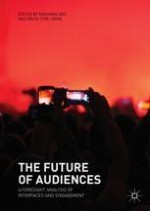2018 | OriginalPaper | Chapter
2. Designing a Foresight Analysis Exercise on Audiences and Emerging Technologies: CEDAR’s Analytical-Intuitive Balance
Authors : Ranjana Das, Brita Ytre-Arne, David Mathieu, Miriam Stehling
Published in: The Future of Audiences
Publisher: Springer International Publishing
Activate our intelligent search to find suitable subject content or patents.
Select sections of text to find matching patents with Artificial Intelligence. powered by
Select sections of text to find additional relevant content using AI-assisted search. powered by
